Tuner Button Transplant
© Frank Ford 2003; Photos by FF
The patient is a1921 Gibson A-4 mandolin that has survived in virtually mint condition. Just about the only thing wrong with this fine old instrument is that one tuner shaft had become somewhat stiff to turn. Not knowing that a drop of oil would have solved the problem, the original owner simple twisted the button harder and harder as the shaft became stiffer. Eventually, the button cracked right off, so the next applications of torque were aided by some stout pliers, which really ground up the stub of the shaft:

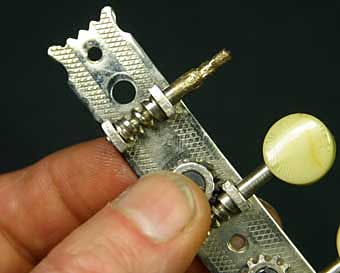
After taking the cog and shaft off, I set about rummaging among my old parts to find a suitable vintage tuner that could be a donor for a button transplant. After a while I came across a strip of tuners from an old bowl back mandolin that had long since deteriorated to the point of disposal.
Ordinarily, I'd be protecting the other buttons with a heat sink, but I did this job without it so you could see the process a bit better. I heated the worm shaft with my little butane torch.
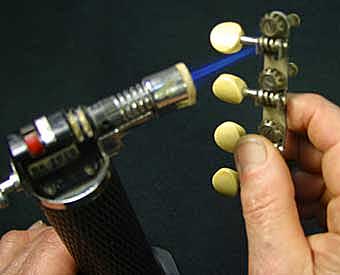
It didn't take too much heat to soften the celluloid where it had been pressed on the shaft. I pulled the button straight off:
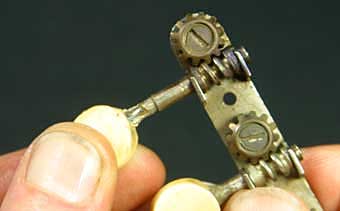
As you can see, the button came off without damage:
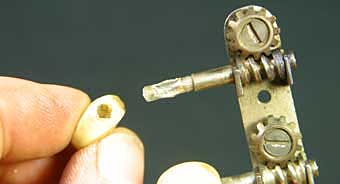
Notice the flattened end of the shaft, which keys into the button once it is pressed in place.
Clearly, the pliers-rounded end of the recipient's shaft would never keep the tuner from slipping, so I whacked it a few times with my small ball peen hammer to flatten it appropriately:
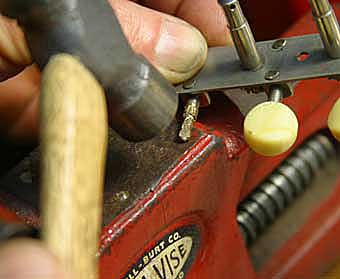
Now, the shaft would hold the button nicely:

Simply reversing the procedure, I heated the shaft and squished the replacement button right into place:
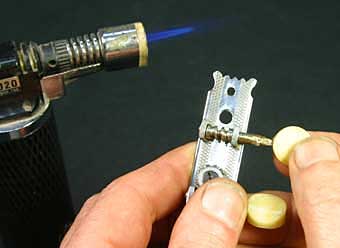
The replacement button was about the same vintage, color, shape and pattern as the original ivoroid buttons on these tuners, so, apart from the scarred shaft, the replacement will go undetected:
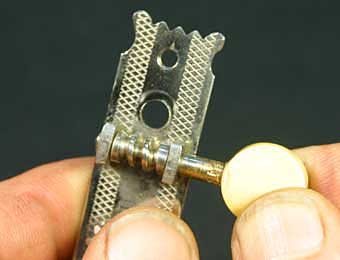
Back to Index Page